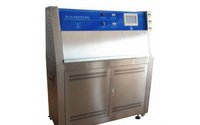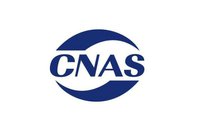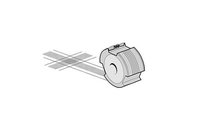Supply Chain Security 2.0: How can the electronics industry safeguard the 'quality bottom line'?
Date:2025-09-01 14:52:00 Views:1342
In August 2025, ERAI, an electronic components industry analysis agency, released the "2024 Counterfeit Components Report", revealing the counterfeit crisis faced by the global industrial chain in the context of semiconductor recovery. A total of 1055 suspected cases of counterfeit and unqualified parts were received throughout the year, a year-on-year increase of 25%, reaching a new high in nearly a decade. This surge in data is not only due to the surge in market demand for global semiconductor sales reaching $588 billion, but also directly driven by the US government's one-time report of 248 counterfeit fan components. If this batch is excluded, the annual growth rate will still reach 3%, continuing the upward trend since 2022.

The report shows that the distribution of counterfeit goods presents a characteristic of interweaving traditional and emerging types. For the 10th consecutive year, analog ICs have become the most affected category, followed closely by microprocessor ICs, storage ICs, and programmable logic ICs. However, capacitors, which experienced a surge in counterfeit goods due to shortages in 2019, only reported 6 cases in 2024, indicating the direct impact of market supply and demand adjustments on counterfeit tendencies. It is worth noting that outdated components still account for 42.75% of the total counterfeit goods, but the proportion of in production components circulating through authorized channels reaches 27.2%. Among them, the number of counterfeit goods circulating through formal channels is more than twice that of components with long delivery times, completely overturning the traditional perception that "in production components are not easily counterfeited".
The brand dimension presents a phenomenon of alternating old and new forces. 3ON Systems has topped the list of counterfeit brands for the first time due to 248 counterfeit fan components reported by the US government. However, after excluding this case, traditional targets such as Texas Instruments (TI) and Xilinx still dominate. The number of counterfeit products under the Xilinx brand has dropped from the top spot in the past decade to the fifth place, possibly due to the strengthened brand protection after AMD's acquisition, while TI has become the brand with the most counterfeit products for the second consecutive year, accounting for 9%. What is even more alarming is that 21% of counterfeit brands have appeared for the first time, and 85.2% of components have been recorded by ERAI for the first time, indicating that counterfeiters are expanding their coverage by forging emerging brands and obscure models.
The penetration depth of the supply chain exceeds expectations. American organizations contribute 51% of counterfeit reports, with third-party testing laboratories (37.35%) and independent distributors (31.85%) being the core forces in identifying counterfeit goods, while the proportion of manufacturers actively reporting only accounts for 5.78%. This data exposes monitoring vulnerabilities throughout the entire supply chain, making it difficult for even authorized channels to completely mitigate risks.
China has achieved significant results in cracking down on infringement and counterfeiting. The 2024 Annual Report on China's Crackdown on Infringement and Counterfeiting Work shows that 44000 trademark and patent cases were investigated nationwide, involving a total amount of 1.129 billion yuan, and 157 cases of trade secrets in high-tech fields were solved by public security organs. In the field of electronic components, a quality control system is established through a four level process of label verification, appearance inspection, functional testing, and outsourced testing. Equipped with high-precision equipment and a team of professional engineers, it can effectively intercept counterfeit components such as old and refurbished goods, providing practical reference for the industry.
This report is not only a set of data, but also a comprehensive examination of the security of the semiconductor industry chain. In the context of technological upgrading and geopolitical competition, enterprises need to build a three-dimensional defense system of "technical testing+channel control+policy compliance" in order to maintain the bottom line of quality in the crisis of counterfeit goods. At the technical level, promoting technologies such as AI visual inspection and blockchain traceability, third-party laboratories need to dynamically update the counterfeit product feature library, and enterprises should establish a four level inspection mechanism upon entering the factory. In terms of channel control, reduce reliance on a single authorized channel, establish a supplier access whitelist, and implement strict qualification audits for independent distributors. In terms of policy compliance, pay attention to China's "Annual Report on Combating Infringement and Counterfeiting" and the EU's tariff policies, and optimize the supply chain layout through free trade agreements. Brand protection requires collaboration. Top enterprises can jointly establish an anti-counterfeiting alliance and share counterfeit databases. Small and medium-sized enterprises need to strengthen cooperation with third-party testing agencies. In terms of geopolitical risk hedging, we will lay out production bases in Southeast Asia and other regions, and reduce the impact of trade barriers through localized procurement. Through these strategies, the electronic components industry can build a more solid defense line in the crisis of counterfeit goods.
The essence of this counterfeit crisis is actually an opportunity for global supply chain restructuring. When authorization channels are lost and counterfeit technology evolves, the industry needs to reconstruct three major understandings: firstly, detection technology is only a bottom line defense, and active anti-counterfeiting measures such as blockchain traceability and chip DNA labeling need to be combined to establish a "prevention identification traceability" full chain system; Secondly, domestic substitution needs to overcome the "low-end availability" trap and build dual barriers of technical certification in high-end fields such as automotive grade IGBT and gallium nitride power devices, in order to truly resist systemic risks; Thirdly, globalization must shift towards "resilience", leveraging the momentum of the fifth industrial transfer to form a new triangular network of dispersed layouts between consumer electronics in Vietnam, packaging and testing clusters in Malaysia, and mobile phone manufacturing in India, in order to avoid concentrated outbreaks of risks in a single region. The essence of counterfeit goods is the crack of trust, and repairing the crack requires the industry chain to share light - only by placing each chip under the X-ray inspection, and weaving a three-dimensional defense network with technological innovation, standard collaboration, and geographical dispersion, can the shadow of counterfeiters truly dissipate.




 Weixin Service
Weixin Service

 DouYin
DouYin
 KuaiShou
KuaiShou





















